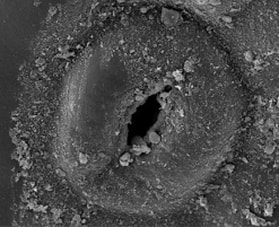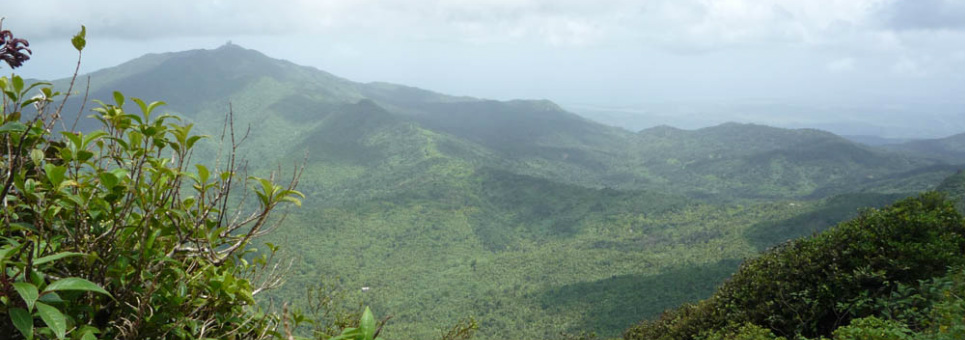bryophyte Stomata
|
Stomata are present across all plants excluding liverworts and are very similar, consisting of a pore surrounded by two guard cells. In all extant plants, stomata are found in the sporophyte. The origin and evolution of stomata in land plants is controversial. Moss guard cells have similar wall architecture and are less variable than tracheophytes guard cells. In reduced sporophytes (such as Ephemerum and Physcomitrella) capsule anatomy is modified and some stomata features are also reduced (Merced & Renzaglia 2013). We described the developmental pattern and distribution of stomata in the moss Funaria (Merced & Renzaglia 2016) and changes in pectin composition during guard cell development. We found that guard cell walls are thinner and rich in pectins during the short period where stomata can open and close (Merced & Renzaglia 2014). We hypothesize that during development of the sporophyte, stomata serves as passages for gas exchange and bringing up water into the expanding capsule, later stomata helps to dry the capsule and influence the release of spores.
The single origin of stomata is complicated by the absence of true stomata in early-divergent mosses, but Sphagnum has specialized epidermal cells, pseudostomata, that partially separate but do not form a pore. Pseudostomata may be related to stomata and share a common function to moss stomata (Merced 2015), with wall architecture and behavior specialized to facilitate capsule dehydration, shape change, and dehiscence. To have a better picture of stomata evolution we studied the ultrastructure, anatomy and composition of stomata of hornworts and proposed that they share a common architecture and fate to stomata of ancient plants (Renzaglia et al. 2017). It turns out that guard cell walls of hornworts lack some of the pectin components necessary for stomata movement that are present in angiosperms (Merced & Renzaglia 2019). Stomata are ubiquitous and necessary in vascular plants, but many lineages of bryophytes (including all liverworts!) have lost stomata (Renzaglia et al. 2020). In a review article we summarize and synthesize the knowledge acquire in the last few years about bryophyte stomata and future directions of study (Merced & Renzaglia 2017). |
Bryophyte diversity, Distribution And Ecology

Bryophytes are usually a neglected group of plants, being small they can be bypass without notice, but once you stop to look at them or better yet, get ahold of a hand-lens or a microscope, you will be able to see their beauty. Bryophytes is the collective name given to three groups of plants: mosses, liverworts and hornworts. I have been studying bryophytes since 2001.
I am working with the bryophytes of Puerto Rico, collecting and identifying bryophytes around the islands. In particular, focusing on the role of bryophytes in Puerto Rican forests and how they respond to anthropogenic and non-anthropogenic disturbances. These studies also take place in urban and community forests that sustain bryophytes to understand how they are different to non-urban habitats. One of the aims is to identify species that could serve as indicators of forest health in different forest types in PR.
To better understand the distribution of bryophytes in a Caribbean tropical rainforest, I have projects studying the presence and abundance of bryophytes in El Verde LTER. We found fewer and smaller patches of the moss Thuidium urceolatum in the forest area of the LFDP that was used for agriculture 80 years ago, showing that some bryophytes can signal the legacy of past land use (Matos et al. 2024). This study was featured in two local newspapers (Metro, El Nuevo Día). Other projects in El Verde Field Station are describing the richness and substrate preferences of Plagiochila, and bryophyte community composition in a second order stream in LFDP.
I am working with the bryophytes of Puerto Rico, collecting and identifying bryophytes around the islands. In particular, focusing on the role of bryophytes in Puerto Rican forests and how they respond to anthropogenic and non-anthropogenic disturbances. These studies also take place in urban and community forests that sustain bryophytes to understand how they are different to non-urban habitats. One of the aims is to identify species that could serve as indicators of forest health in different forest types in PR.
To better understand the distribution of bryophytes in a Caribbean tropical rainforest, I have projects studying the presence and abundance of bryophytes in El Verde LTER. We found fewer and smaller patches of the moss Thuidium urceolatum in the forest area of the LFDP that was used for agriculture 80 years ago, showing that some bryophytes can signal the legacy of past land use (Matos et al. 2024). This study was featured in two local newspapers (Metro, El Nuevo Día). Other projects in El Verde Field Station are describing the richness and substrate preferences of Plagiochila, and bryophyte community composition in a second order stream in LFDP.



